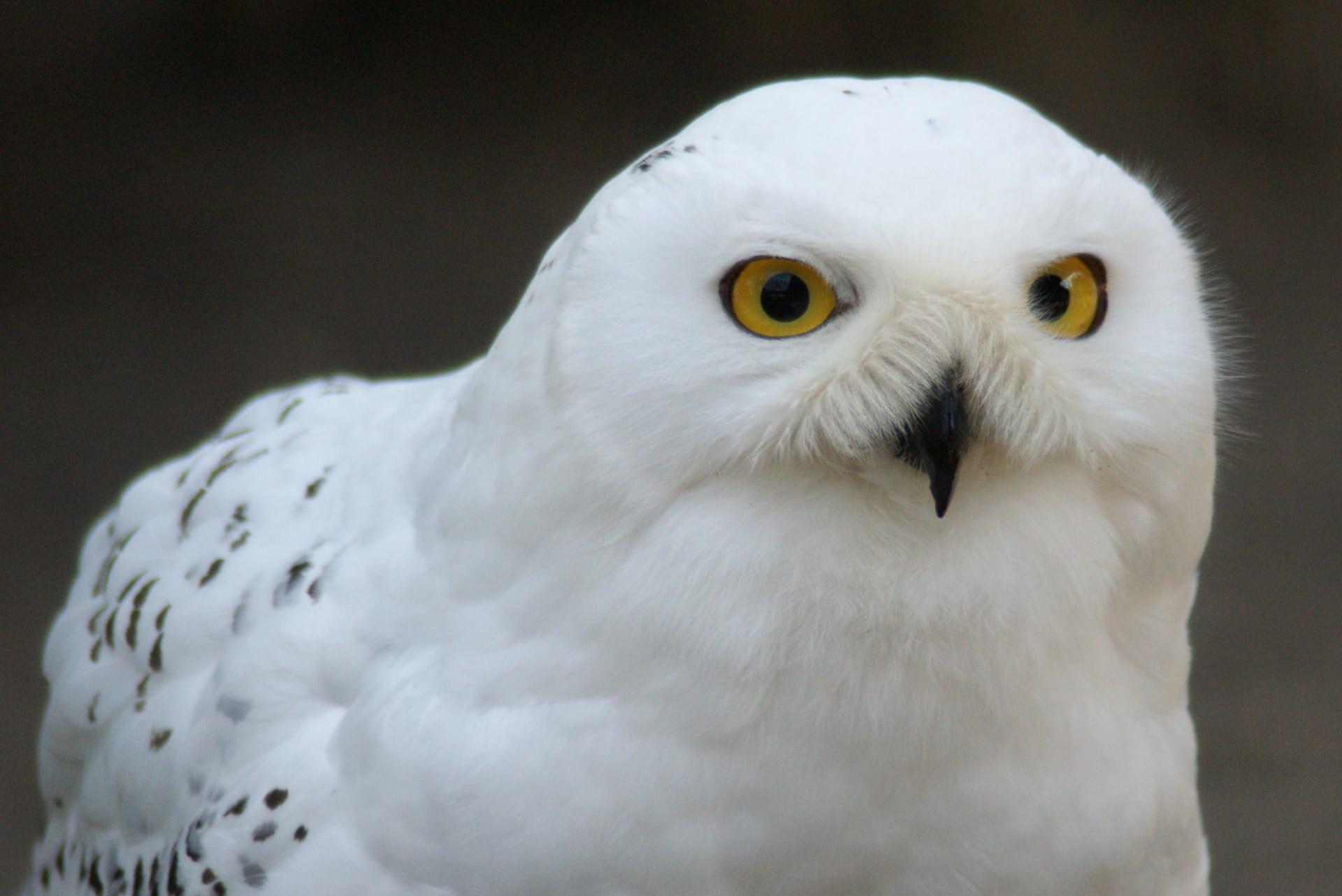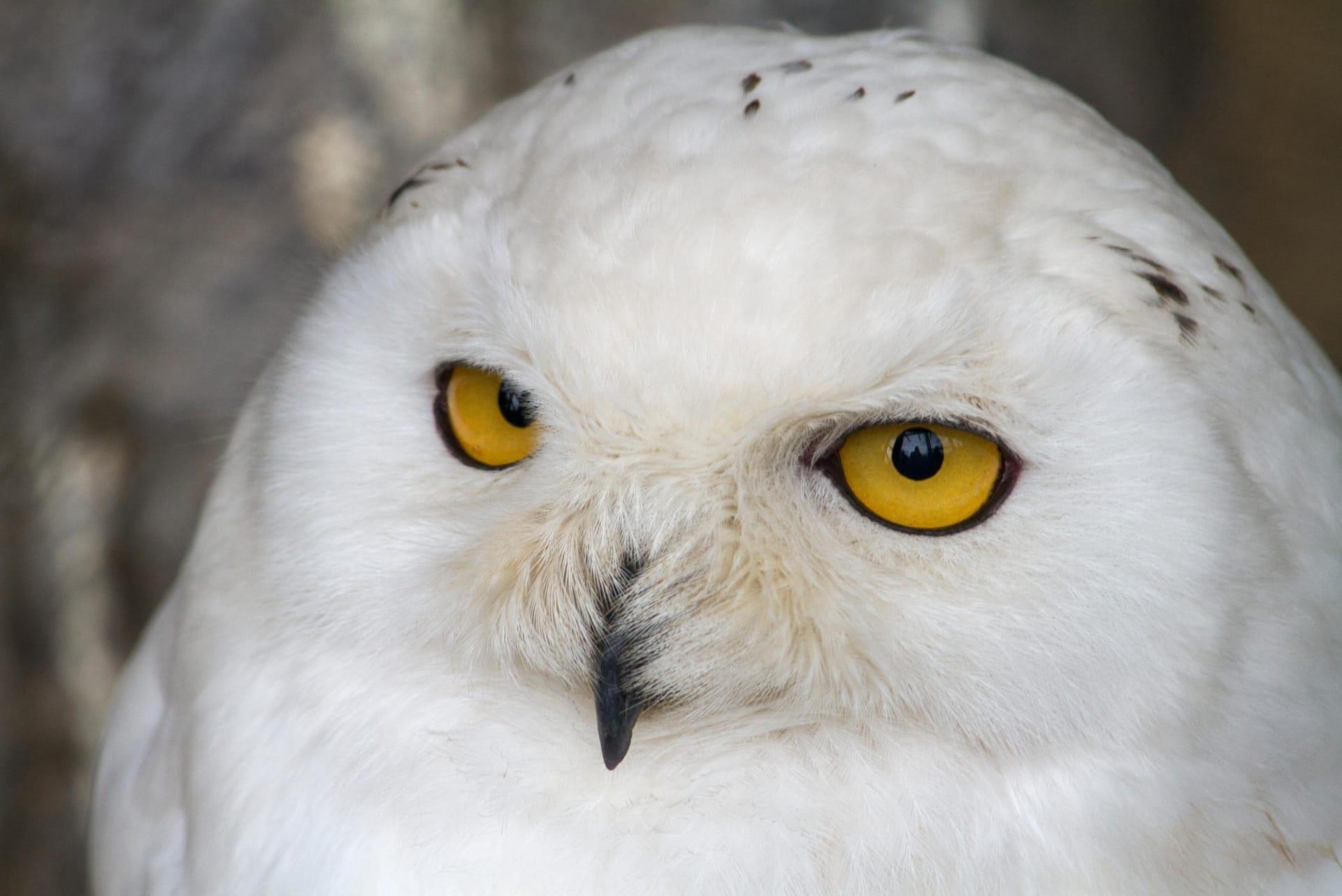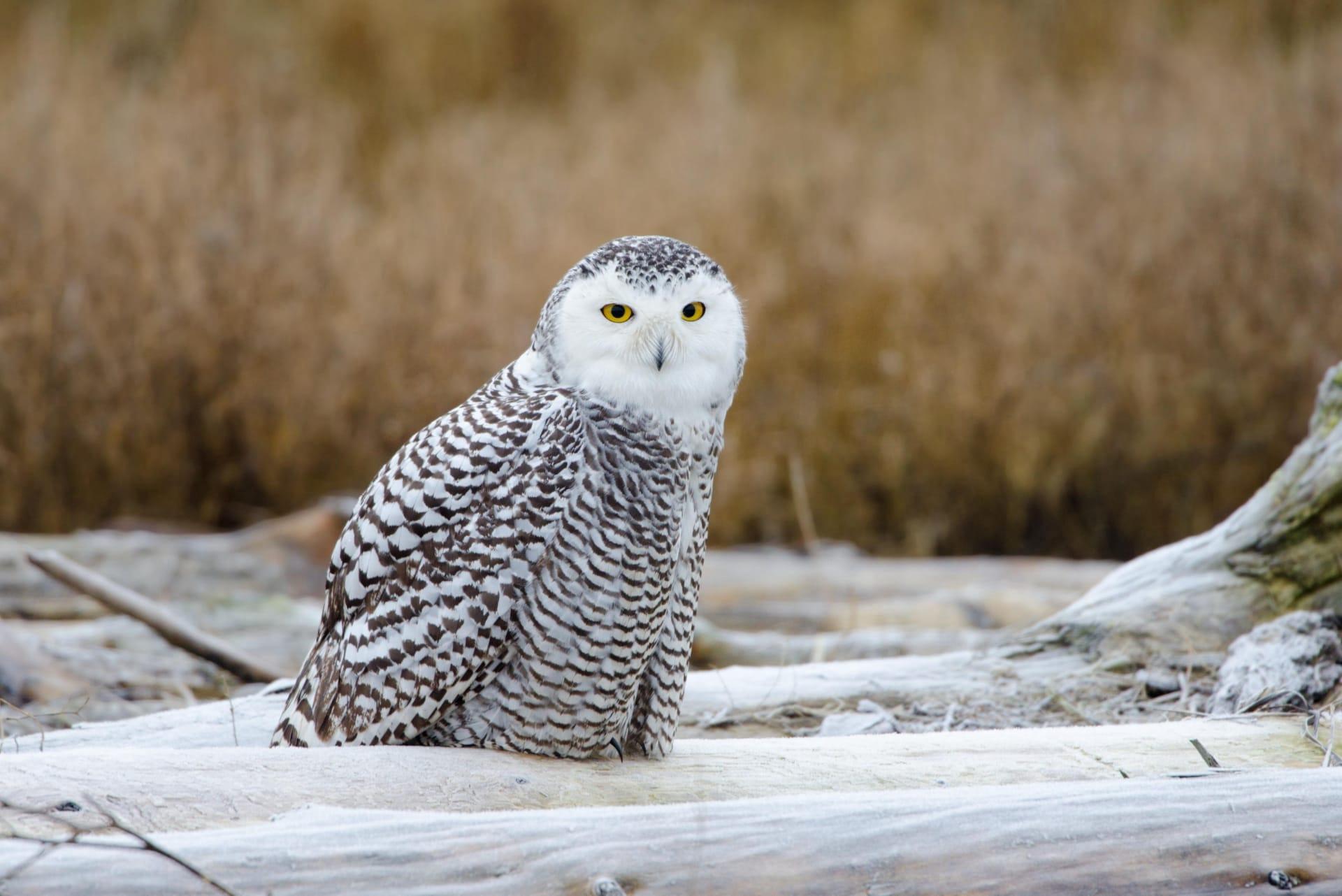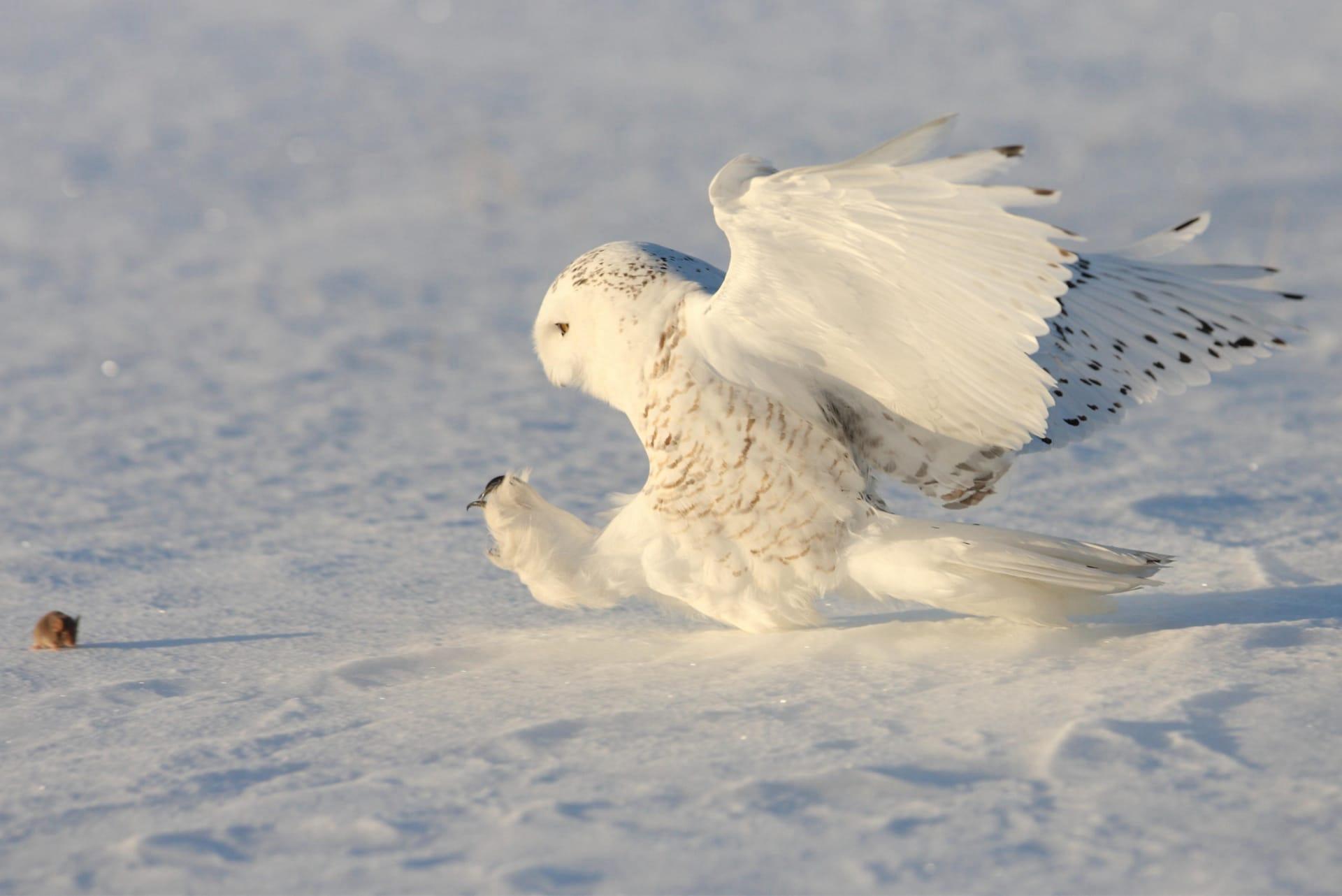1
Did you know that the Snowy Owl is a powerful bird of prey, known for its striking white plumage that camouflages perfectly with the snowy environments of the Arctic tundra? These owls are among the largest and heaviest owl species, with a wingspan stretching up to 4.8 feet (146 cm). Interestingly, their weight varies significantly throughout the year, ranging from 3.5 pounds (1.6 kg) to over 6.5 pounds (3 kg), depending on their hunting success and the availability of food sources like lemmings.
Another fascinating aspect of Snowy Owls is their nomadic lifestyle, driven by the pursuit of food. They are not strictly nocturnal like many other owl species, but are diurnal, hunting both day and night. What's unique about them is their ability to travel great distances. In years of scarce food in the Arctic, they have been known to migrate southward, even reaching areas in the United States. This migration is not a regular occurrence, making any sighting of them in lower latitudes a rare and exciting event for bird enthusiasts.

2
Snowy Owls have exceptional eyesight and hearing, aiding them in hunting in the harsh conditions of the Arctic. Their eyes are adapted for keen vision in bright light, a necessity in the land of the midnight sun. They can spot prey like small mammals from a distance of half a mile (0.8 km). Moreover, their hearing is so acute that they can hear prey moving underneath the snow. Once they locate their target, they can dive through snow up to a foot deep to catch it.
Remarkably, the Snowy Owl's diet is highly specialized. Their primary prey are lemmings, and they can consume up to 1,600 lemmings a year. That's about three to five lemmings per day! This heavy reliance on a single prey species means that the Snowy Owl's breeding success is closely tied to the population cycles of lemmings. In years when lemmings are abundant, Snowy Owls can lay a larger number of eggs, sometimes up to 14, but in lean years, they might not breed at all.

3
The Snowy Owl's nesting habits are as unique as its habitat. Unlike most birds that build nests in trees, these owls nest on the ground, making a shallow depression on the top of a mound or boulder, which provides a good vantage point to watch for predators and prey. This ground nesting behavior is an adaptation to the treeless Arctic tundra. The female Snowy Owl lays 3-11 eggs, and during the incubation period, which lasts about 32 days, the male provides food for the female.
Another interesting feature of the Snowy Owl is its plumage, which changes with age and season. The adult males are almost completely white, while the females and young birds have more flecks of black in their feathers. This difference in plumage helps with camouflage in the varying Arctic conditions. The white plumage reflects sunlight, an adaptation to prevent overheating during the long summer days in the Arctic. In the winter, their feathered feet act like snowshoes, helping them walk on snow without sinking.

4
Snowy Owls have a unique way of communicating. They have a varied vocal range, but their most common call is a deep, booming 'hoo-hoo'. This call can be heard over distances up to 7 miles (11 km) in the open tundra. They use these calls for attracting a mate, defending their territory, or signaling distress. Additionally, during courtship, the male performs a dramatic display flight, rising high in the air and then swooping down in a series of steep dives and ascents.
In terms of longevity, Snowy Owls have a relatively long lifespan for birds. In the wild, they can live up to 9-10 years, though in captivity, some have been known to live over 28 years. Their survival in the wild largely depends on the availability of prey and the harshness of their environment. They face few natural predators, but can fall victim to foxes or wolves when on the ground, and younger owls are sometimes preyed upon by Golden Eagles.

5
The Snowy Owl's adaptation to its environment extends to its breeding cycle. Unlike many bird species that breed in spring or summer, the Snowy Owl's breeding season is dictated by the availability of prey. This means they can breed in winter if food is abundant. The female chooses the nest site and may reuse the same site over multiple years. After hatching, the chicks, called 'owlets', stay in the nest for about 25 days before they start to wander around.
Lastly, Snowy Owls play a significant role in the culture and folklore of indigenous peoples of the Arctic. They are often seen as symbols of wisdom or as spiritual messengers. Many Arctic cultures regard the Snowy Owl with reverence and incorporate them into their myths and legends. This cultural significance, combined with their striking appearance and unique behaviors, makes the Snowy Owl a truly fascinating bird, admired by birdwatchers and nature enthusiasts around the world.